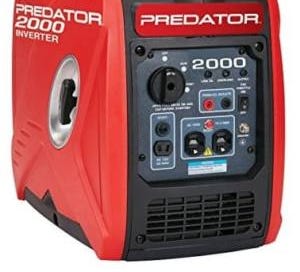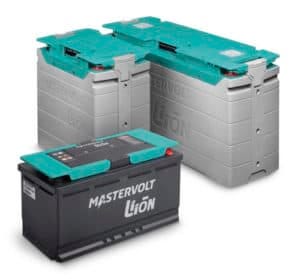Dear Mike,
I would like to leave my 2kW Predator inverter generator in my pickup bed and use my fifth wheel pigtail to at least keep the batteries charged and using lights. Is this possible? Thanks. —Ron M.
Dear Ron,
Yes, that should work very well, especially if you get the right kind of adapter and extension cord. Let’s explore why…
Amps needed at 12 volts vs. 120 volts
Okay, let’s assume you have a converter that can charge your RV house batteries at 80 amps. That’s pretty common nowadays with lithium batteries.
So does that mean that your generator needs to supply 80 amps of current? Nope… it’s more like 1/10th of that, which is 8 amps or so (maybe 10 amps, adding in all the various inefficiencies). That’s because there’s roughly a 10:1 ratio of voltage to current needed. It’s all about the power (watts) needed.
It’s all about the watts, baby!
So a 12-volt battery that’s charging at 80 amps is using around 960 watts of power or so. That’s because 12 volts x 80 amps = 980 watts. To figure out the amps needed to be supplied by a 120-volt generator all we have to do is divide 980 watts / 120 volts = 8 amps.
Voila! Since there’s a 10:1 ratio between the 120-volts AC from the generator and the 12-volt DC needed by the batteries, there’s an inverse 1:10 ratio of amperage needed to convert from 120-volts AC to 120-volts DC.
Can your 2kW Predator supply 10 amps at 120 volts?
You bet your sweet bippy it can. Let’s look at a typical 2,000-watt Predator (or any other brand) inverter generator.
Runtime: 12 hours @ 25% load
Quiet, only 66 dB
Electronic overload protection
79.7cc air-cooled OHV gas engine
2000 starting watts, 1600 running watts
So let’s convert 1600 running watts to how many amps of current would be available at 120-volts AC. We just have to divide watts by volts to find amps. That’s 1600 watts / 120 volts = 13.3 amps.
That means that a 2000-watt Predator inverter generator can supply 13 amps of current at 120 volts continuously. And since your converter/charger only needs around 10 amps of current at 120 volts, there’s another 3 amps at 120 volts left over for powering lights and such. And that 3 amps at 120-volts AC is around 30 amps at 12-volts DC. Easy peasy!
The hookup
This also hints that you really don’t need to run a heavy 50-amp shore power cord over to the generator in the bed of your truck since it’s limited to 16 amps of output current. I would suggest you get a 15-to-50 amp dogbone adapter and a heavy-duty 12-gauge extension cord, maybe 25 feet in length.
With that setup you should be able to keep your batteries charged while powering lights and possibly even your refrigerator at the same time. And if you pull too much current for your generator to supply, it will just shut itself down.
That’s all, folks….
OK, everyone. Remember that electricity is a useful and powerful force, so we all need to pay attention to safety precautions while using it.
Let’s play safe out there…. Mike








